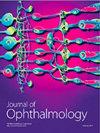Corneal Epithelial Thickness Mapping: A Major Review
IF 1.8
4区 医学
Q3 OPHTHALMOLOGY
引用次数: 0
Abstract
The corneal epithelium (CE) is the outermost layer of the cornea with constant turnover, relative stability, remarkable plasticity, and compensatory properties to mask alterations in the underlying stroma. The advent of quantitative imaging modalities capable of producing epithelial thickness mapping (ETM) has made it possible to characterize better the different patterns of epithelial remodeling. In this comprehensive synthesis, we reviewed all available data on ETM with different methods, including very high-frequency ultrasound (VHF-US) and spectral-domain optical coherence tomography (SD-OCT) in normal individuals, corneal or systemic diseases, and corneal surgical scenarios. We excluded OCT studies that manually measured the corneal epithelial thickness (CET) (e.g., by digital calipers) or the CE (e.g., by confocal scanning or handheld pachymeters). A comparison of different CET measuring technologies and devices capable of producing thickness maps is provided. Normative data on CET and the possible effects of gender, aging, diurnal changes, refraction, and intraocular pressure are discussed. We also reviewed ETM data in several corneal disorders, including keratoconus, corneal dystrophies, recurrent epithelial erosion, herpes keratitis, keratoplasty, bullous keratopathy, carcinoma in situ, pterygium, and limbal stem cell deficiency. The available data on the potential role of ETM in indicating refractive surgeries, planning the procedure, and assessing postoperative changes are reviewed. Alterations in ETM in systemic and ocular conditions such as eyelid abnormalities and dry eye disease and the effects of contact lenses, topical medications, and cataract surgery on the ETM profile are discussed.角膜上皮厚度绘图:主要综述
角膜上皮(CE)是角膜的最外层,具有不断更替、相对稳定、显著的可塑性以及掩盖下层基质变化的代偿特性。能够绘制上皮厚度图(ETM)的定量成像模式的出现,使得更好地描述上皮重塑的不同模式成为可能。在这份综合综述中,我们回顾了所有可用的 ETM 数据,包括在正常人、角膜或全身性疾病以及角膜手术情况下使用不同方法(包括甚高频超声波 (VHF-US) 和光谱域光学相干断层扫描 (SD-OCT))绘制的 ETM 图。我们排除了手动测量角膜上皮厚度(CET)(如使用数字卡尺)或角膜上皮厚度(CE)(如使用共焦扫描或手持式角膜测厚仪)的 OCT 研究。本报告对不同的 CET 测量技术和能够生成厚度图的设备进行了比较。我们还讨论了 CET 的标准数据以及性别、年龄、昼夜变化、屈光度和眼压可能造成的影响。我们还回顾了几种角膜疾病的 ETM 数据,包括角膜炎、角膜营养不良、复发性上皮糜烂、疱疹性角膜炎、角膜成形术、大泡性角膜病、原位癌、翼状胬肉和角膜缘干细胞缺乏症。本文回顾了 ETM 在指示屈光手术、计划手术和评估术后变化方面的潜在作用的现有数据。还讨论了眼睑异常和干眼症等全身性和眼部疾病对 ETM 的影响,以及隐形眼镜、局部用药和白内障手术对 ETM 的影响。
本文章由计算机程序翻译,如有差异,请以英文原文为准。
求助全文
约1分钟内获得全文
求助全文
来源期刊

Journal of Ophthalmology
MEDICINE, RESEARCH & EXPERIMENTAL-OPHTHALMOLOGY
CiteScore
4.30
自引率
5.30%
发文量
194
审稿时长
6-12 weeks
期刊介绍:
Journal of Ophthalmology is a peer-reviewed, Open Access journal that publishes original research articles, review articles, and clinical studies related to the anatomy, physiology and diseases of the eye. Submissions should focus on new diagnostic and surgical techniques, instrument and therapy updates, as well as clinical trials and research findings.
 求助内容:
求助内容: 应助结果提醒方式:
应助结果提醒方式:


